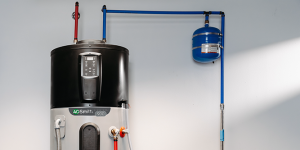U.S. inflation hit a record high back in June of last year, making everything from food to gas more expensive. Although things have slowed down since then, economists predict that high inflation could persist until the end of 2024 or 2025.
Despite rising costs, consumers are still carrying on with home improvement projects, according to a survey by Today’s Homeowners. That said, this year’s projects may look different compared to previous years, with many homeowners — particularly millennials and Gen Z — opting for DIY solutions to keep costs at bay.
Roughly 50% of Americans are spending less on home improvement projects this year
Inflation may be receding, but high costs keep putting a dent into the already stretched budgets of Americans. According to a survey by Today’s Homeowners, nine out of 10 homeowners have home improvement projects planned for 2023. However, roughly 50 percent say they will be spending less on these projects, with 28 percent saying they will spend “significantly less”.
These findings come over a year after inflation hit a record high back in June of 2022. At the time, the U.S. consumer price index (CPI) hit a 9.1 percent year-over-year growth — something not seen since the 1980s.
That said, the reduction in spending is more pronounced in certain states than in others. Connecticut, for instance, is the state where most homeowners are tightening their belts, with nearly 72 percent saying they’re slashing costs. By contrast, only 30 percent of Vermont respondents said they’ll be reducing their home improvement spending for the year.
Out of those planning to take on projects this year, the majority expect to complete between one (28.7 percent) and two (36.7 percent) projects, while less than 9 percent expect to complete four projects or more.
How homeowners are coping with rising costs
Besides reducing their budgets, about 51 percent of respondents are thinking about postponing their home projects until 2024, citing cost as the biggest factor for this decision.
However, many — especially millennial and Gen Z homeowners — are turning to DIY solutions rather than hiring a professional to do the job. According to the survey, 76 percent of adults between the ages of 18 to 24, as well as 73 percent of adults between the ages of 25 to 35, say that inflation has pushed them to take on home improvement projects themselves rather than doing it with a contractor.
Another way homeowners are trying to save money on costs is by using their checking and savings accounts for funding rather than borrowing money as interest rates continue to rise.
Paying for home improvement projects when money is tight
Although as much as 74 percent of homeowners are avoiding financing their home improvement projects due to an increase in the cost of borrowing, a good chunk (37.4 percent) expect to use a credit card to finance costs.
Although credit cards can be a good option to finance smaller projects, these have an average interest rate of roughly 21 percent, which can add up if you can’t pay your balance in full.
If money is tight, consider the following alternatives to finance any unexpected home repairs, as well as planned projects:
— Home improvement loan: These loans come with fixed interest rates. The average personal loan has an interest rate of just under 11 percent. However, depending on the lender and your credit, you could secure a rate under 5 percent. Home improvement loans can also be a good option for emergency repairs, as many lenders offer next- or even same-day funding.
— Home equity loan or home equity line of credit (HELOC): Both home equity loans and HELOCs are loans that allow you to tap into your home equity, up to 85 percent of your home’s value. These loans are a second mortgage on your home. Since the property acts as collateral, they tend to have lower interest rates than personal loans. However, defaulting on your loan could put your property at risk of foreclosure.
— Cash-out refinance: With a cash-out refinance, you’re replacing your existing mortgage with a new one with new terms and interest rates. With this type of loan, you can typically draw out up to 80 percent of your home value. Just like home equity loans and HELOCs, these loans come with lower interest rates, as they are secured by your home. On the downside, defaulting on your loan can result in the bank seizing your property.
In the end, the right financing option will depend on your particular situation and financial circumstances. Still, it’s always best to compare offers from at least three different lenders to ensure you’re getting the best loan for your needs.
___
©2023 Bankrate online. Visit Bankrate online at bankrate.com. Distributed by Tribune Content Agency, LLC.
Read the full article here














